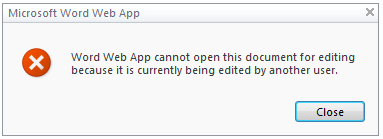Pricing
Google Apps: Google Apps for Business costs either $5 a month per user or $50 a year per user. It’s free for “accredited not-for-profit 501(c)(3) entities with
If you need fewer than 10 users you can use Google Apps for free. You can also use Google Docs, without Google Apps, for free.
Office 365: Pricing for Office 365 starts at $6 per user per month for small organizations with fewer than 25 employees. For organizations with more than 25 employees, pricing ranges from $10-27 per user per month, but there’s also kiosk pricing at $4 or $10 a month. There are also discounts for education.
Volume licensing customers may also be eligible to purchase Office Professional Plus.
Zoho: Zoho Docs costs either $3 per user per month or $5 per user per month, depending on your needs. E-mail is a separate service and costs either $2.50 or $3.50 per user per month, depending on the plan. There are also free versions of both the e-mail service and Docs that offer basic functionality. Zoho has several other features that can be added on at various price points.
Storage
Google Apps: Apps for Business provides 25GB per user for e-mail and 1GB per user for documents. E-mail attachment sizes are limited to 25MB.
Office 365: The basic 365 plans provide 25GB of e-mail storage, but the more expensive plans offer unlimited storage. Attachment file sizes are limited to 35MB. Office documents are stored in SharePoint Online, with a limit of 2GB. Additional storage can be purchased for $2.5 per GB per user per month.
Zoho: Zoho Docs offers 1GB of storage space, and additional 5GB of storage can be purchased for $3 a month.Zoho Mail includes 10-15 GB per user depending on the plan. Attachments are limited to 10MB.
Compatibility
Google Apps: Users report being able to import documents with basic formatting with no problems, but more complex formatting tends to cause problems. That’s probably not a problem for most users most of the time, but can be a show stopper at times.
Docs can import files in Office 97-2003, Office 2007/2010, OpenOffice text and RTF, CSV and a few other formats. It can’t export in Office 2007/2010 format yet, but it can export PDFs.
Office 365: We’re seeing reports that Office 365 can open most of the Office documents thrown at it quite well. However, since the Web-based version of the document editors can only support a limited number of features, you may be limited to looking and not editing. See the “Advanced Features” section for more details.
I wasn’t able to find a list of what Office 365 can or can’t edit online or export. It can import older Word files, but has to convert them into the new XML format for editing and saving/exporting. Excel, PowerPoint and OneNote seem to be limited to the newer formats entirely. Excel files using certain features can only be viewed, but I wasn’t able to find a list of which features cause this issue. It can view, via the browser, text files, but not edit them. The truth is that Office 365 is meant to be used with a desktop version of Office, not from a browser. See “Advanced Features” for more info.
Zoho: Zoho has improved its ability to import documents with footnotes, headers etc. bringing it at least on par with Google Docs.
Zoho Docs can open a wide variety of files, including Google Docs, Office 97-2003, Office 2007-2010, OpenOffice, HTML, RTF, CSV and more. It can export most of these files as well, plus it can export in PDF and LaTeX.
Sharing and Collaboration
Google Apps: Google Apps famously supports real-time editing between multiple collaborators, and the ability to share files with anyone with a Google account regardless of whether they have an account in your own Google Apps installation. Files can also be exported in multiple formats (see above) and revisions are tracked (see below). If you want to to share a file publicly, you can create a direct URL for the document so that anyone can view it.
There are also several third-party integrations for collaborating on Google Docs, such as the Box integration we recently wrote about. Some of these can also provide offline access (see below).
Office 365: I saw several reports that real-time collaboration was being added to Office 365, but when I tried it out I got this error:

It turns out you have to install Lync to do real-time document collaboration with 365, which seems like a burden compared to the real-time editing and instant messaging built into Google Apps with no software to deploy. Also, after installing the Lync client, I was informed that I also had to install the Microsoft Online Services Sign-In Services client to use it. If this is required, why isn’t it bundled with Lync?
Users from outside your organization can access your SharePoint Online files if you pay extra for the partner access feature. Windows Live Skydrive allows for more flexible sharing, but I haven’t found a way to integrate it with 365.
Zoho: Zoho supports real-time collaboration, but it’s not as slick as collaboration enabled by Google Apps. It doesn’t require the installation of any additional software, though. Zoho also allows documents to be shared with any e-mail address. Collaborators can sign-up for a Zoho account, or use a Google, Facebook or Yahoo account to login. You can also create links for public viewing.
Next: versioning, mobile access, online access, advanced features, conclusions and more options.
Article source: RRW http://feedproxy.google.com/~r/readwriteweb/~3/XMO3BiinhQE/google-apps-office-365-zoho.php